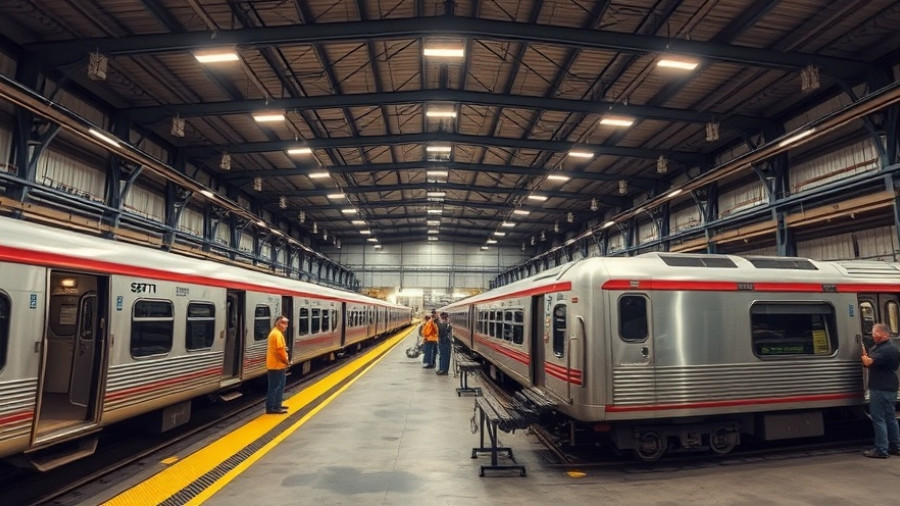
The Silverliner IV Safety Crisis: Understanding the Concerns
The ongoing safety issues surrounding SEPTA's Silverliner IV railcars have become a significant focal point for commuters and city officials alike. With the National Transportation Safety Board (NTSB) highlighting that the outdated fleet poses an immediate safety risk, questions about daily operations and commuter safety have taken center stage. As SEPTA Regional Rail riders voice their frustrations, it has become clear that this issue extends beyond mere inconvenience—it is a pressing health and safety concern that affects the everyday lives of many Pennsylvanians.
In 'Public, City Council confront SEPTA over Silverliner IV safety inspections,' the discussion dives into critical transit safety issues, exploring key insights that sparked deeper analysis on our end.
Commuter Reactions: Frustration and Anxieties Rise
During a recent Philadelphia City Council hearing, SEPTA riders expressed their growing frustrations. Many share the anxiety of uncertain commutes, causing disruptions not just in travel plans but also in personal lives and finances. "I was late to school," one commuter lamented, reflecting the struggles students face when transportation is unreliable. Another rider shared that having to rely on ridesharing services due to delays has strained her finances, especially as fares increase.
The Economic Implications: A Strain on Wallets
The financial toll of the Silverliner IV situation cannot be overlooked. Commuters are not only burdened with increased prices for transportation options; they also face the hidden costs of missed work or educational opportunities due to delays. Riders voiced their concerns over potential fare hikes that could exacerbate their financial situation, as they seek alternate, often more expensive, means of commuting. This situation underscores the critical need for SEPTA to address safety while also considering the affordability of their services.
SEPTA's Response: Commitments and Challenges
SEPTA has stated that they are ramping up their safety inspections and aim to complete them by the end of the month. While this commitment to heightened inspections is a step in the right direction, the agency is transparent about the challenges ahead. With estimates indicating that it would cost about $2 billion to replace the Silverliner IV cars, SEPTA’s financial limitations have put pressure on their ability to replace outdated vehicles. The agency has indicated an interest in leasing additional railcars as a possible short-term solution, reflecting a willingness to explore options amidst financial constraints.
Understanding the Future: Predictions and Safety Priorities
Looking forward, the timeline for a return to normal service remains uncertain. SEPTA has emphasized that while they meet inspection deadlines, they must also proceed cautiously with the existing fleet for the remainder of its useful life—an assurance that does little to comfort commuters desperate for reliable service.
As SEPTA continues its inspections and improvements, the communications efforts with riders must evolve. Users have called for better updates and transparency surrounding operational changes, emphasizing that while they understand the prioritization of safety, timely information is equally critical.
Conclusion: A Call for Action and Understanding
The Silverliner IV safety situation is a stark reminder of the delicate balance that exists within public transit systems—a balance between maintaining safety protocols, ensuring affordability, and providing reliable service. As cited by commuters and local officials, ongoing challenges and outdated infrastructures can have ripple effects in the community. SEPTA’s commitment to improving safety is important, but a collaborative effort is vital as they navigate these complexities.
As commuters and community members, it is crucial that we stay engaged in discussions about transit safety and operation strategies. By advocating for these improvements, we can help shape a transit future that prioritizes the needs of all riders.
For more updates on transit safety and improvements in Pennsylvania, stay informed. Your voice matters in this critical conversation!
 Add Row
Add Row  Add
Add 




Write A Comment